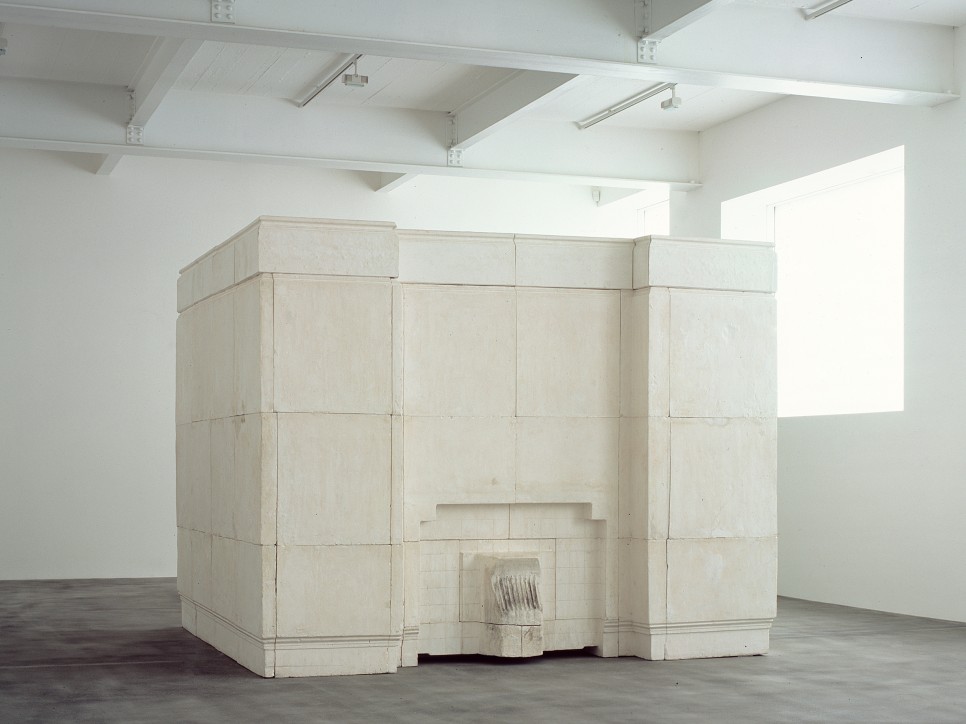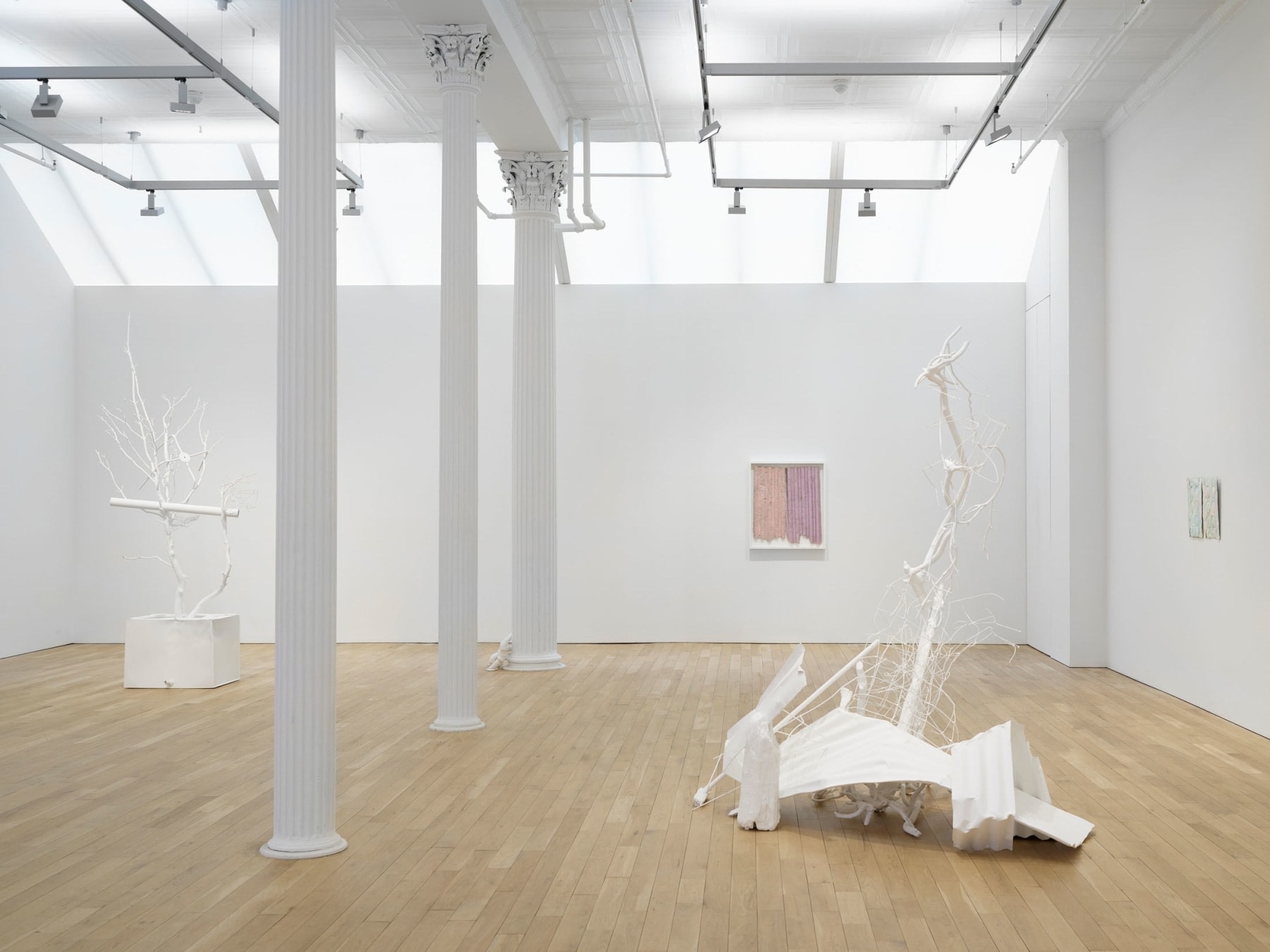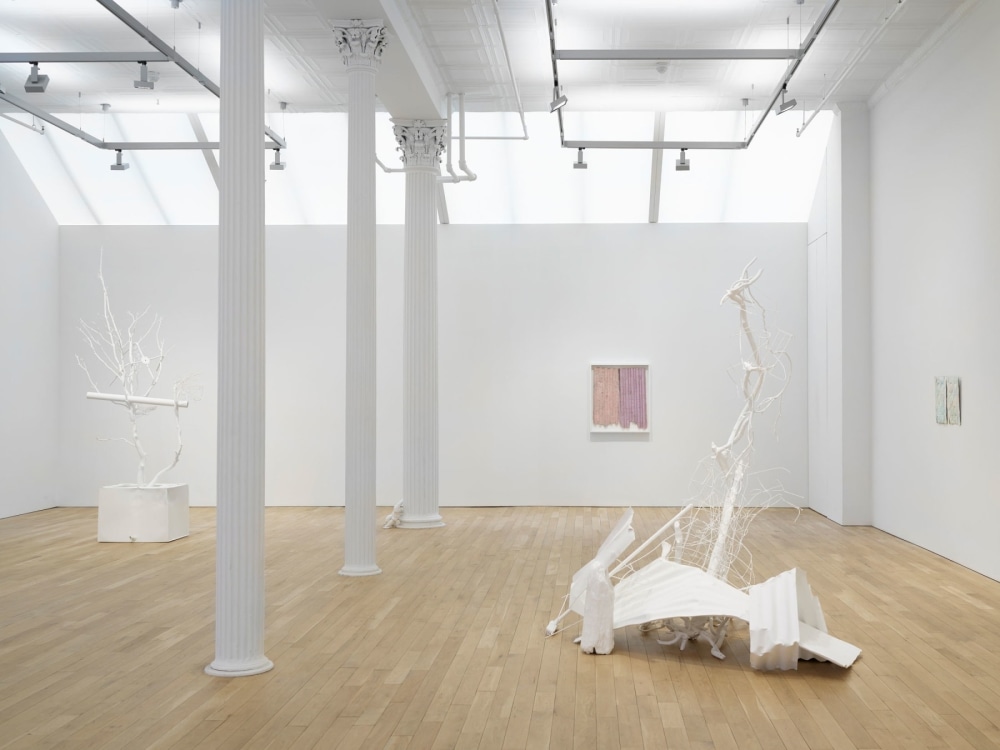

Rachel Whiteread, installation view, Luhring Augustine Tribeca, New York, NY. Photo: Farzad Orwang
At Luhring Augustine, New York, the sculptor's embalmed everyday objects memorialize both personal and collective transformation
Rachel Whiteread’s alchemy turns absence into presence, refuse into potent symbolism. For her eponymous solo show at Luhring Augustine Tribeca, the artist presents a new body of work produced over the past three years that shifts the paradigm of her practice. In contrast to the smooth solemnity of her earlier work, Whiteread seems to redirect her focus towards systems of entropy and transformation. The three, free-standing sculptures in the centre of the gallery are turbulent and disordered – assemblages of disparate elements strewn together as if by a storm. Rising from a dented cubic planter in Untitled (Thicket) (2022), leafless branches are entangled with industrial detritus: a tube; an anonymous four-legged metal base; contorted wire mesh suspended like knotted ornaments from a barren, lifeless effigy of a tree. It’s thickly painted in dense layers of matte white – an act of embalming to resist further decay. Whiteread’s work has always been about revealing the invisible, making the incorporeal tactile, alienating the familiar in order to illuminate its nuances. Here, however, instead of monolithic motionlessness, she shows us a more haunting kind of stillness – one born in the wake of catastrophe.
Broken pieces of corrugated iron sheets are moulded in papier-mâché to create sculptures such as Untitled (Lavender and Pink) (2022). The papier-mâché, in turn, is made of discarded notes and collected scrap paper from the artist’s home and studio. Undulating surfaces are exuberantly painted in fantastic, shimmering colours often mixed with silver leaf and gouache. Cracks and crevices where the paint did not permeate reveal layers of variegated substrate – an archaeology of composted domesticity. In this paper simulacrum of dilapidated building material, fragmented and fragile, Whiteread seems to suggest the violence and displacement of spolia and decomposition, as well as their regenerative potential – of recycling the past in order to build new structures and fertilize new growth.
Read full article at frieze.com


